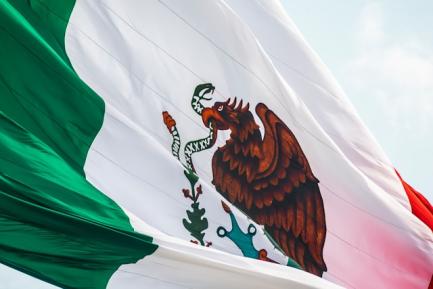
India: the wheel of dharma on the path to development
The wheel that lies at the centre of the Indian flag offers a symbol of progress and symbolises the values that the country must possess in order to become the new China, including the discipline and the wisdom needed to make the most of opportunities and correct weaknesses.
Over the last decade, many have argued that a change is brewing in the multi-polar world order, as globalisation appears to be stagnating, new geopolitical conflicts threaten to become entrenched and the economic rise of great powers such as India is accelerating. In this challenging context, one of the big questions is whether India could become the new China. The wheel of dharma – a key element of the tricolour flag since the country’s independence in 1947 – offers a symbol of progress and represents the values that India will need to possess for such a future to materialise, such as the discipline and wisdom necessary to seize opportunities and address weaknesses.
India’s economy in perspective
Without indulging in guessing games, India is the most populated country in the world, with approximately 1.44 billion inhabitants in 2023. This places it above China, the population of which has been in decline for several years now and currently stands at 1.41 billion. Moreover, India will no doubt remain the most populated country for the rest of the 21st century, as its population continues to grow at a steady pace (0.9% in 2023, in line with the global average), it has a comparatively young structure, and there is scope for it to increase its life expectancy, which is currently low compared to other emerging economies in its vicinity.
Being the most populated country in the world, and with a young and growing demographic, has given India a certain advantage in terms of economic growth (the so-called demographic dividend), since domestic demand – consumption and investment – has been the main driver of its economic growth and has provided a buffer against external shocks. Thus, India’s GDP has grown at annual rates of around 7% in recent years, with the exception of 2020. In 2023, its GDP slightly exceeded that of the United Kingdom, its former colonial power, reaching 3.57 trillion current dollars. However, India’s GDP per capita in 2023 was around 2,500 current dollars (almost 10,200 in purchasing power parity terms), placing it around the average mark for lower-middle-income countries,1 and indicating that the country still has a lot of room left to grow. By way of comparison, China reached that income level between 2004 and 2005, and its GDP per capita, at around 12,600 current dollars, places it slightly above average among upper middle-income countries.
This high growth rate is the result of the growing role of services, which in 2023 accounted for almost 50% of its GDP (see first chart). However, the labour market shows some of the Indian economy’s weaknesses. Around half of the labour force is employed in low-productivity sectors, such as agriculture, construction or trade. In addition, according to the IMF,2 the informality rate of the labour market is very high, and stands at around 90% for the country as a whole, with a particularly high rate in rural areas. Labour participation has also remained low in recent years, rising barely 8 pps between 2018 and 2024 to 56.4%, reflecting the difficulties faced by women in entering the labour market (the participation rate in urban areas barely reaches 30%).
- 1The World Bank classifies economies into different groups according to their income levels, based on Gross National Income (GNI) per capita as calculated using the Atlas Method (which uses data unadjusted for purchasing power parity), assigning India a GNI per capita of 2,520 current dollars. These groups consist of: low-income economies (1,145 dollars or less); lower-middle-income economies (1,146 to 4,515 dollars); upper-middle-income economies (4,516 to 14,005 dollars), and high-income economies (more than 14,005 dollars).
- 2IMF (2025). «India: 2024 Article IV Consultation-Press Release; Staff Report; and Statement by the Executive Director for India», IMF Staff Country Reports 2025, 054.

A structural viewpoint
In recent years, India has experienced remarkable growth, far surpassing that of China and that of middle-income economies as a whole (around 5%, see second chart). Taking a broader view, the average growth rate since 2010 has been 6.8% (excluding the years 2020 and 2021), compared to 6.3% in the period 2000-2009 and 5.8% in the previous decade. On the other hand, China had been growing at an average rate of 10% per year between the mid-1980s and 2010, which has allowed it to rapidly converge with higher-income countries in terms of GDP per capita, and it now finds itself in a different phase of development, with lower growth rates and adverse demographics. In short, India’s recent «overtaking» of China, in terms of growth rate, is taking place because these countries are at different stages in their development.

The evolution of the Indian economy in recent decades can be illustrated through three key spheres of development: changes in its economic structure, demographics, and educational and health conditions (see table). In the economic sphere, of particular note is the similarity between India and other lower-middle-income countries in terms of their sectoral composition and the profile of their imports and exports. This is an economy in which agriculture still plays a vital role (around 17%), and that of the manufacturing sector is relatively low (around 15%), while food and fuel still make up a significant portion of the country’s international trade.3 There are also similarities with other lower-middle-income countries at the demographic level, including a high percentage of the population living in poverty and living in rural areas, despite the rapid progress made in the last decade in reducing poverty in the country. At the same time, structural weaknesses are evident in the education and health indicators, with persistently low literacy rates, and a health system with limited coverage and infrastructure.
However, the last few years of President Modi’s rule have been an example of successful macrofinancial stabilisation. Since 2013, inflation, while still highly volatile due to its heavy dependence on the food component, has been within the target range of between 2% and 6%, and episodes of higher inflation have been brief. In this task of controlling inflation, a monetary policy focused on bolstering the credibility of the central bank in achieving its objective has been key, with increases in the intervention rate when necessary. All this has been accompanied by a sustained increase in foreign reserves, which has supported the rupee, and contained levels of foreign debt. These years of orthodox monetary and exchange rate policy have allowed the country to begin to steadily lower interest rates.
On the other hand, unlike China, India has maintained a persistent current account deficit. This is because, although it exports professional and technological services, as well as high-value-added consumer electronics, this is not enough to offset its imports of all kinds of goods, including labour-intensive manufactured goods. The relatively small size of the country’s manufacturing sector is partly due to the high obstacles that the country continues to impose on foreign direct investment and on various imports of intermediate goods. Alleviating these obstacles, as government initiatives such as Make in India or the Production-Linked Incentive are seeking to do, will help develop an Indian industrial sector that is integrated into global value chains and is capable of competing, especially in the current context marked by the reconfiguration of international trade, where friendshoring could play a vital role.
- 3This stands in stark contrast to the situation in China, where the manufacturing sector plays a significant role both in terms of value added and in the country’s exports.

The new (China) India?
In short, having taken a brief snapshot of the Indian economy, the debate surrounding whether India could be the new China remains open. Robust demographics and economic growth play in its favour, accompanied by moderate inflation expectations and a healthy financial situation. Since 2024, India’s growth has slowed slightly, but it is expected to remain above 6% in the coming years. However, there are still structural problems that limit the country’s potential growth and need to be reformed, such as the labour market, institutional quality, bureaucracy, and the high poverty rate. Therefore, whether the wheel of dharma will be able to pick up the pace on the path to development will remain a topic of heated debate during the next decade.


